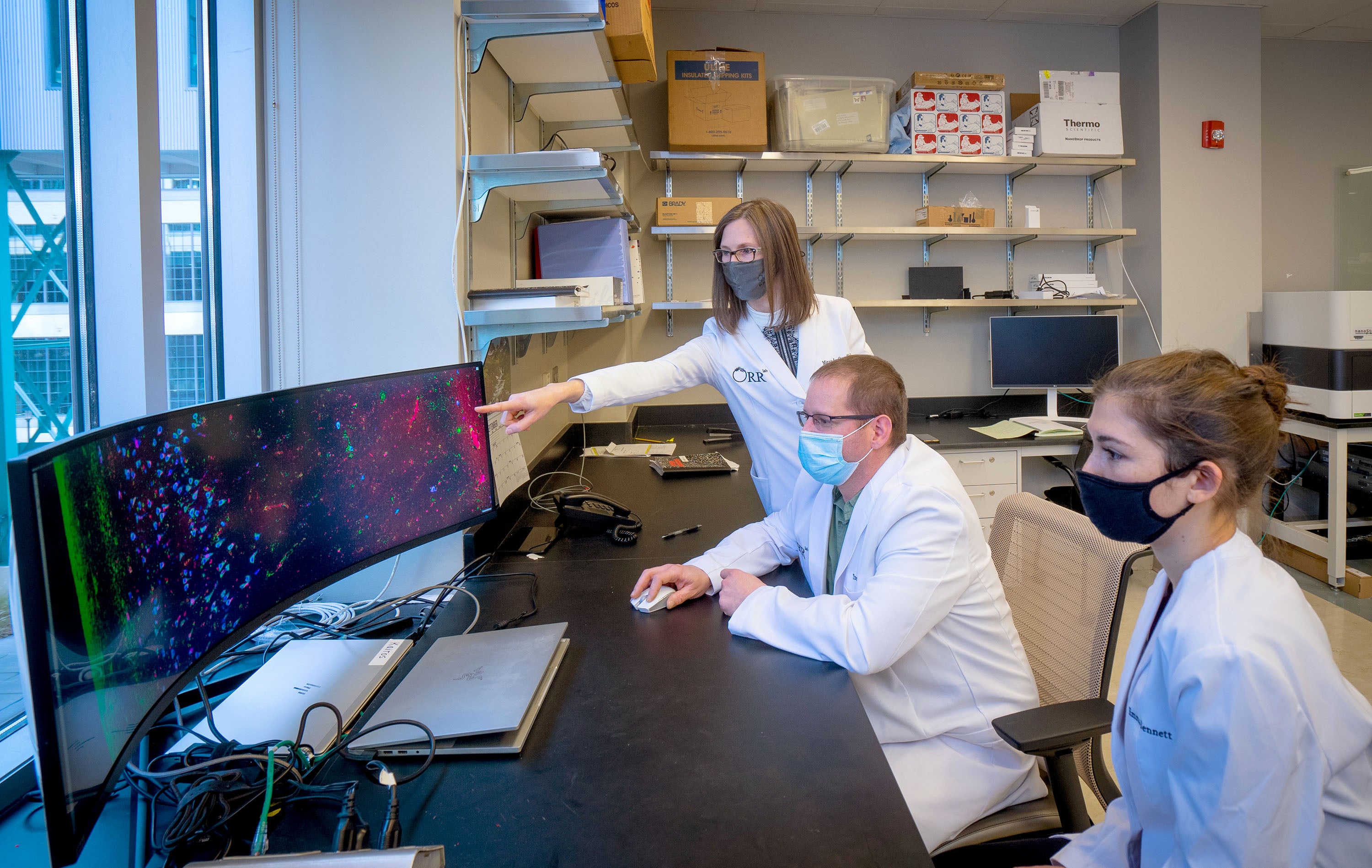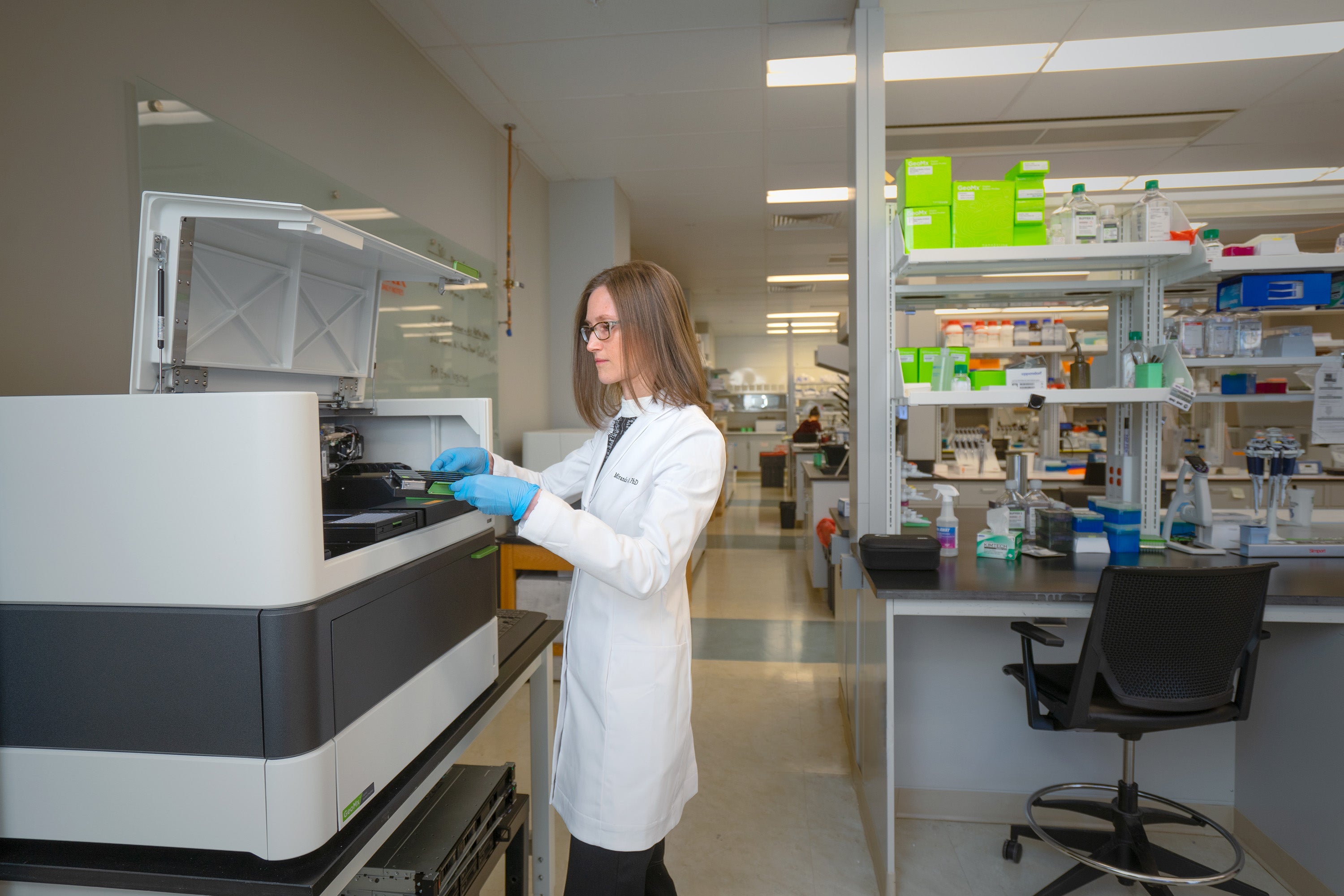Salisbury VA scientist Miranda Orr strives for Alzheimer’s cure after grandmother’s death
Published 12:00 am Thursday, February 24, 2022
By Todd Goodman
Salisbury VA
SALISBURY — As a result of her grandmother passing away from Alzheimer’s disease, a would-be fourth generation farmer embarked on a different career path where she could devote herself to finding a cure for the most common cause of dementia worldwide.
Miranda Orr, a research health scientist with Salisbury VA Health Care System and assistant professor at Wake Forest Baptist Hospital, grew up in a very small town in rural northeastern Montana.
“My hometown has fewer than 200 people in it,” she said. “We are mostly farmers and ranchers.”
She was going to follow in her family’s footsteps until her grandmother passed away. This was when she decided to go in a different direction.
“It was very hard to accept as a young adult that her doctors had nothing to give her,” Orr said. “I thought it was because we didn’t have access to cutting edge health care in that part of the country, but it turns out that’s not the case. There simply aren’t cures.”
Orr had just graduated Montana State University when she asked one of her former professors how she could help find a cure. He told her she would need to become a scientist, which she did. She received her doctorate in neuroscience and began focusing on the biology of aging — more specifically, at what point healthy aging becomes unhealthy and causes disease.
“For example, if you get a sunburn, your skin cells experience damage and need to make some decisions,” she said. “If the damage is so bad they can’t repair it, they can divide with that damage, which causes cancer, or the cells may just die.”
Orr says there is a third option. The cells can become senescent, meaning they don’t die or divide. They survive the damage and become dysfunctional cells.
“They become resistant to death and release substances that are very toxic to neighboring cells,” she said. “And that causes neighboring cells to get sick and they can either die or become senescent as well.”
The most important point of Orr’s study was to prove senescent cells were in the brain and how they could be recognized. Her research in 2018 identified these cells, but the methods had been developed based on cells growing in a dish, not in an aged human brain. She and her team weren’t sure if senescent cells were rare or the methods needed to improve. The only way to better understand the impact of senescence in the brain was to develop more sophisticated methods to identify them.
“We looked at 76 brains and about 180,000 individual cells from older adults that had passed away in different stages of Alzheimer’s,” she said. “Using a new method, we were able to profile them, one by one, to see if they were senescent.
Because senescence is a complex process, she needed to look for multiple features for confirmation. She discovered that about 2% of the cells were senescent, with most being neurons. These are the brain cells critical to things like learning and memory.
The process took four years to confirm.
“It’s not easy to spot senescence,” Orr said. “We had a good idea what the answer was four years ago, but we had to keep validating and retesting the hypothesis. We used many different approaches to confirm the cells were senescent.”
Just knowing that senescent cells reside in the brain is a big step in finding a way to eliminate them.
“We’re excited about our study,” Orr said. “It’s gaining attention, primarily for its implications toward new treatment options. Our team is looking at Alzheimer’s from the perspective of aging. Why as we grow older, does our risk for Alzheimer’s increase? As we better understand aging, we may be able to find treatments for age-related diseases.”
Senescent cells accumulate in all tissues as people age and contribute to all sorts of dysfunction. There now are dozens of new biotech and pharmaceutical companies focused on developing therapies to remove these cells.
“We first had to know they were there,” she said. “We are confident that we found unique cells that may contribute to Alzheimer’s. Our hope is that if we target these cells, we may be able to alter the process.”
Orr said a clinical trial is beginning to test whether these drugs show any benefit to Alzheimer’s by removing senescent cells.
“I imagine there will be more treatment options specific to each person’s disease stage,” she said. “We have on-going projects to determine at what age senescent cells first appear in the brain. With this information, we may be able to start treating patients in early stages to prevent disease progression and dementia.”
With this study complete, one of Orr’s next challenges will be to see if senescent cells contribute to Lou Gehrig’s Disease. Veterans are at an increased risk for developing ALS and she wants to know if senescent cells may be contributing.






